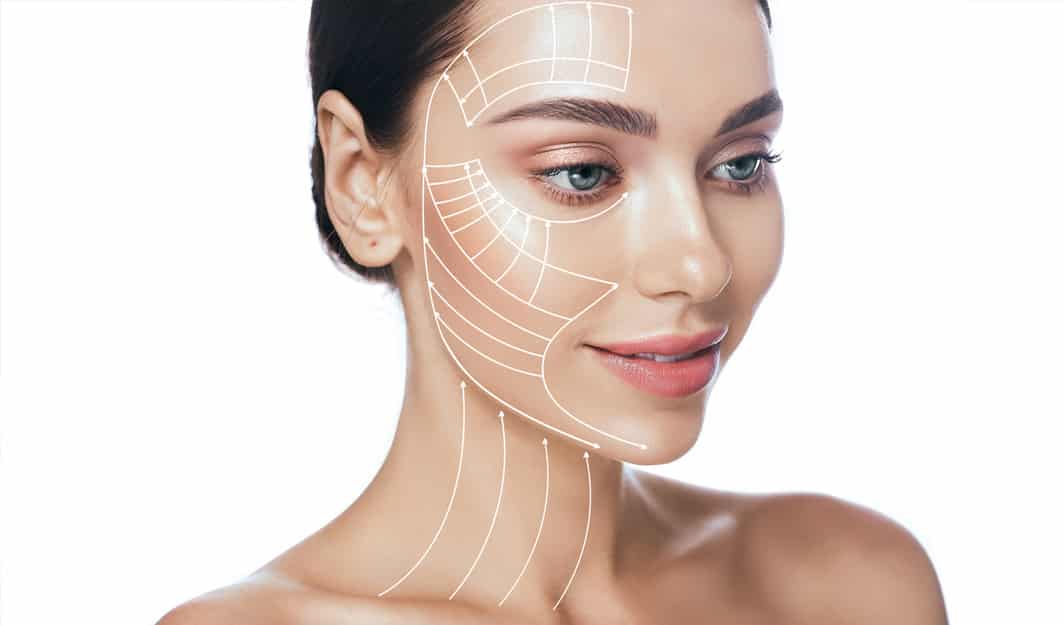Sagging skin and a loss of fat volume in the face causes a person’s overall face shape to change as we age. Thinning cheeks, sagging jowls and, in some cases, drooping eyelids can make you look tired and unhappy—even if you don’t feel that way. Facial plastic surgery is a go-to solution to the problem of these signs of aging, but even knowing that, many of our patients wonder: Are there different types of facelifts? Chicago’s Dr. John Q. Cook at Whole Beauty® Institute says yes. In fact, he uses different facelift techniques to revitalize different patients’ faces, depending on which area of the face they want to improve.
There are various surgical and non-surgical options for different facial zones.
Upper Face
If you have a heavy brow, you may also have sagging eyelids and forehead wrinkles, since these are all closely related facial zones. An endoscopic brow lift and blepharoplasty (eyelid surgery) are two surgical methods to enhance the upper face. A “BOTOX® brow lift” is a non-surgical option that temporarily lifts the eyebrows with strategic injections to relax overly expressive muscles.
Mid-Face
The mid-face area often undergoes very significant changes as time goes by. Volume loss causes the cheeks to develop a flattened, thinner, or deflated appearance. Nasolabial folds may become more prominent. Age-related loss of collagen is a significant factor in these changes. A surgical facelift, facial fat transfer, and facial fillers are three options commonly used for improving the center of the face. A traditional, full facelift involves lifting the skin while tightening tissues and muscles. Fat transfer is a longer-lasting strategy for restoring volume in gaunt areas, such as the cheeks. Fillers are injectable gel-like substances that come in various degrees of thickness, viscosity, and elasticity, which temporarily add volume and lift to the mid-face zones. Fillers will eventually break down over time, requiring touch up treatments—typically every six to 12 months, depending on the type of filler used. If your main concern is the upper cheek area, then a temporal facelift may be best.
Lower Face and Neck
The lower face and neck are often heavily impacted by aging. Sagging skin and deeper structures on the lower part of the face around the jawline can be addressed with both surgical and non-surgical techniques. A full facelift combined with a neck lift is often used to target signs of aging that develop in the cheeks, jaw area, and neck. MyEllevate® is a minimally invasive surgical suture system that lifts and tightens sagging skin and muscle beneath the jawline. With any of these treatments and procedures, the goal is to address a “bottom heavy” look and create a face that has a better-defined jawline, sleeker contours, and an overall more youthful appearance.
Want more detailed answers to questions about the different types of facelifts and other cosmetic options?
Our Chicago-based team at Whole Beauty® Institute can explain more. Call us at 312-751-2112 (Chicago Gold Coast Office) or 847-446-7562 (North Shore (Winnetka) Office), or submit a contact form online.


